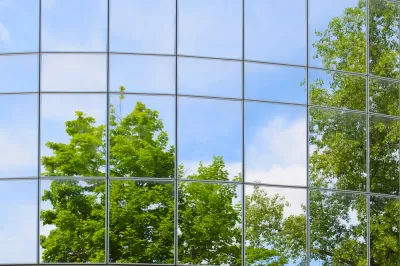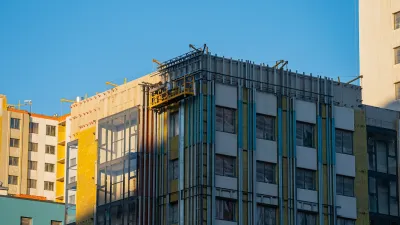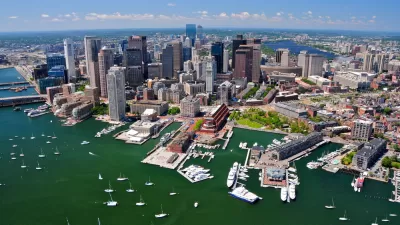The American Institute of Architects gave a reality check regarding its ambitious and aggressive carbon reductions targets.

"According to the 'AIA 2030 Commitment 2015 Progress Report,' [pdf] released today, the design industry is not on pace to meeting the ambitious goal of having every project designed by a signatory firm achieving carbon neutrality by 2030," according to an article by Wanda Lau.
In a separate post, Kim Slowey puts the findings of the progress report succinctly: "Only 4% of projects so far have met the 70% energy savings target for 2015 building performance, with the average savings coming in at 38%."
Although the building industry is falling short of the goals set forth in the 2030 Commitment, "All told, the energy predicted to be saved from the 2015 reported projects totals 21 million metric tons of greenhouse gas emissions," explains Lau. "According to the U.S. Environmental Protection Agency’s Greenhouse Gas Equivalencies Calculator, this is the equivalent of powering 2.2 million houses in a year." Participation and the total square footage of projects in the initiative have also increased since 2014.
As part of the article's in-depth coverage of the AIA's progress report, Lau includes an examination of the energy modeling that the report emphasizes for projects to meet "increasingly stringent benchmarks."
FULL STORY: A Reality Check from the AIA 2030 Commitment 2015 Progress Report

Maui's Vacation Rental Debate Turns Ugly
Verbal attacks, misinformation campaigns and fistfights plague a high-stakes debate to convert thousands of vacation rentals into long-term housing.

Planetizen Federal Action Tracker
A weekly monitor of how Trump’s orders and actions are impacting planners and planning in America.

In Urban Planning, AI Prompting Could be the New Design Thinking
Creativity has long been key to great urban design. What if we see AI as our new creative partner?

King County Supportive Housing Program Offers Hope for Unhoused Residents
The county is taking a ‘Housing First’ approach that prioritizes getting people into housing, then offering wraparound supportive services.

Researchers Use AI to Get Clearer Picture of US Housing
Analysts are using artificial intelligence to supercharge their research by allowing them to comb through data faster. Though these AI tools can be error prone, they save time and housing researchers are optimistic about the future.

Making Shared Micromobility More Inclusive
Cities and shared mobility system operators can do more to include people with disabilities in planning and operations, per a new report.
Urban Design for Planners 1: Software Tools
This six-course series explores essential urban design concepts using open source software and equips planners with the tools they need to participate fully in the urban design process.
Planning for Universal Design
Learn the tools for implementing Universal Design in planning regulations.
planning NEXT
Appalachian Highlands Housing Partners
Mpact (founded as Rail~Volution)
City of Camden Redevelopment Agency
City of Astoria
City of Portland
City of Laramie





























